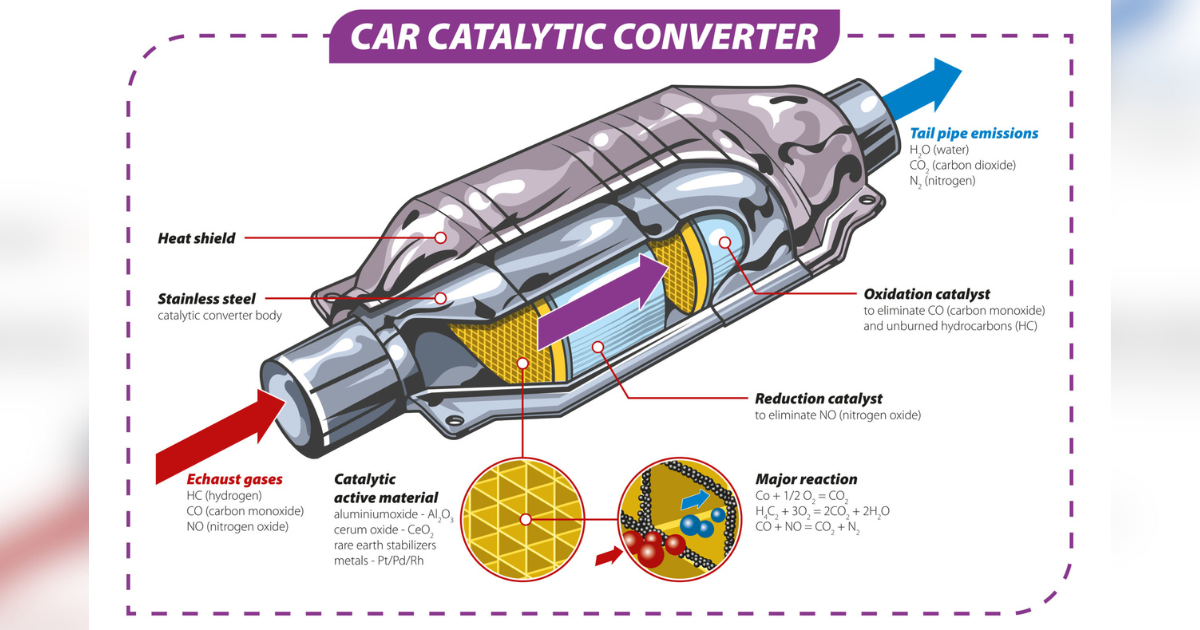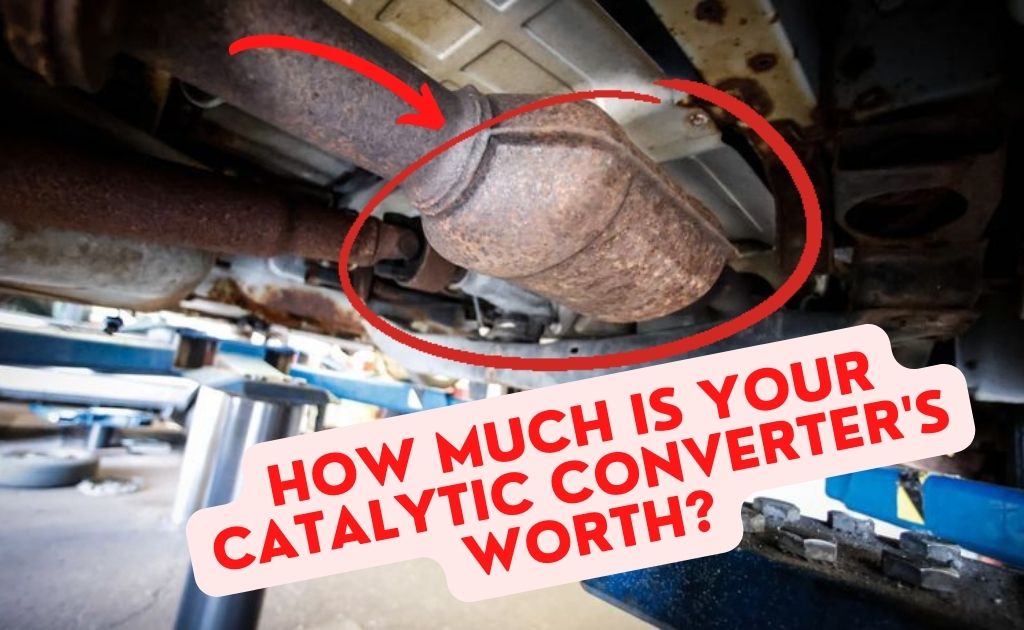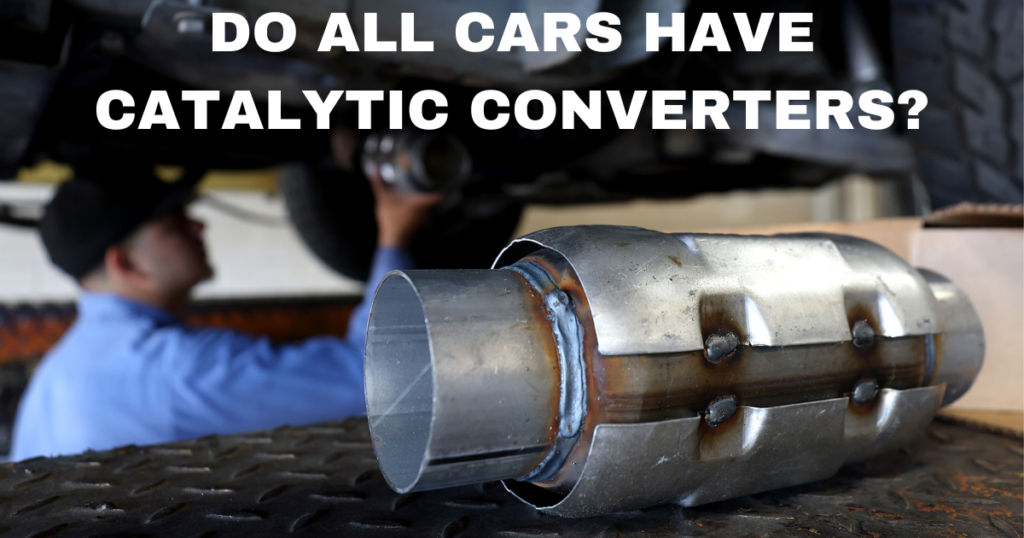
The automotive industry has come a long way in reducing harmful vehicle emissions. The catalytic converter is an essential component of today’s car emission system. It additionally serves as a valuable component that is frequently stolen.
Is there a catalytic converter in every car, and what is its purpose? This article will develop a deeper look into this critical component of your vehicle. It also reviews which cars don’t have a catalytic converter and explain why the part is so valuable. Continue reading the article to explore more.
What is a Catalytic Converter?
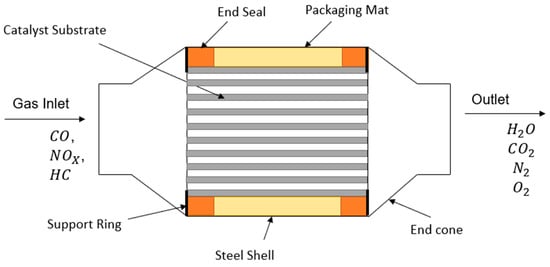
The catalytic converter is a vital part of your vehicle’s exhaust system. It removes potentially hazardous compounds from exhaust gases before they are released into the atmosphere.
A catalytic converter is typically bolted to the car’s exhaust pipe underneath. All current vehicles include a catalytic converter, which reduces emissions and so helps to reduce air pollution.
The exhaust contains hazardous compounds such as carbon monoxide, nitrogen oxides, and hydrocarbons. The gas is converted into less harmful chemicals before it is discharged via the car’s exhaust. The process is known as a “catalytic converter” because a catalyst is used to complete it.
Do All Cars Have Catalytic Converters?
No, not all cars have a catalytic converter. Most modern cars, however, include a catalytic converter, which has become a mandatory emission control system in many nations. In 1974, automobile catalytic converters were made compulsory in the United States, and many other countries followed suit.
Purpose of Catalytic Converter
A catalytic converter’s prime purpose is to eliminate hazardous emissions from vehicles. Before harmful pollutants such as carbon monoxide, nitrogen oxides, and hydrocarbons are released into the atmosphere, the device converts them into less harmful gases.
A catalyst, usually a combination of platinum, palladium, and rhodium, is used in the catalytic converter to catalyze a chemical reaction that converts these hazardous gases into carbon dioxide, water vapor, and nitrogen gas.

Why Do Many Car Enthusiasts Replace Their Old Cars with Catalytic Converters?
Many car enthusiasts install catalytic converters on their old cars to reduce emissions and comply with local laws. Older cars may be exempt from emissions laws, but fitting a catalytic converter can reduce environmental effects. Catalytic converters can also increase performance and fuel efficiency in older cars.
Do Cars Have More Than One Catalytic Converter?
Some cars have multiple catalytic converters. Larger or more powerful vehicles need more exhaust treatment capacity to meet pollution standards.
Multiple catalytic converters improve exhaust flow and reduce backpressure in high-performance vehicles. The number and layout of catalytic converters in a vehicle depend on its make, model, and country’s emissions standards.
Is It Possible To Have a Car Without a Catalytic Converter?
Most cars that don’t have a catalytic converter are older types that were made before it was required to have one. These vehicles did not require a catalytic converter when they were built. Some owners may remove or disable their catalytic converter to improve performance or fuel efficiency.
Due to growing pollution, driving an automobile without a catalytic converter is banned in many places. Removing or deactivating a catalytic converter can damage the engine and reduce performance and reliability.
Electric cars, some off-road and racing vehicles, might not have catalytic converters since they are exempt from emission standards. It’s crucial to remember that operating a car without a catalytic converter is prohibited in many nations, and doing so might result in fines or other consequences. Driving a vehicle without a catalytic converter can also damage the environment and cause air pollution.
What will happen if I take out my catalytic converter?
- The exhaust noise from the car will be louder.
- The car will be more challenging to drive.
- Emissions of toxic gases will increase.
- The vehicle will be deemed unfit for on-road use.
What causes catalytic converter theft?
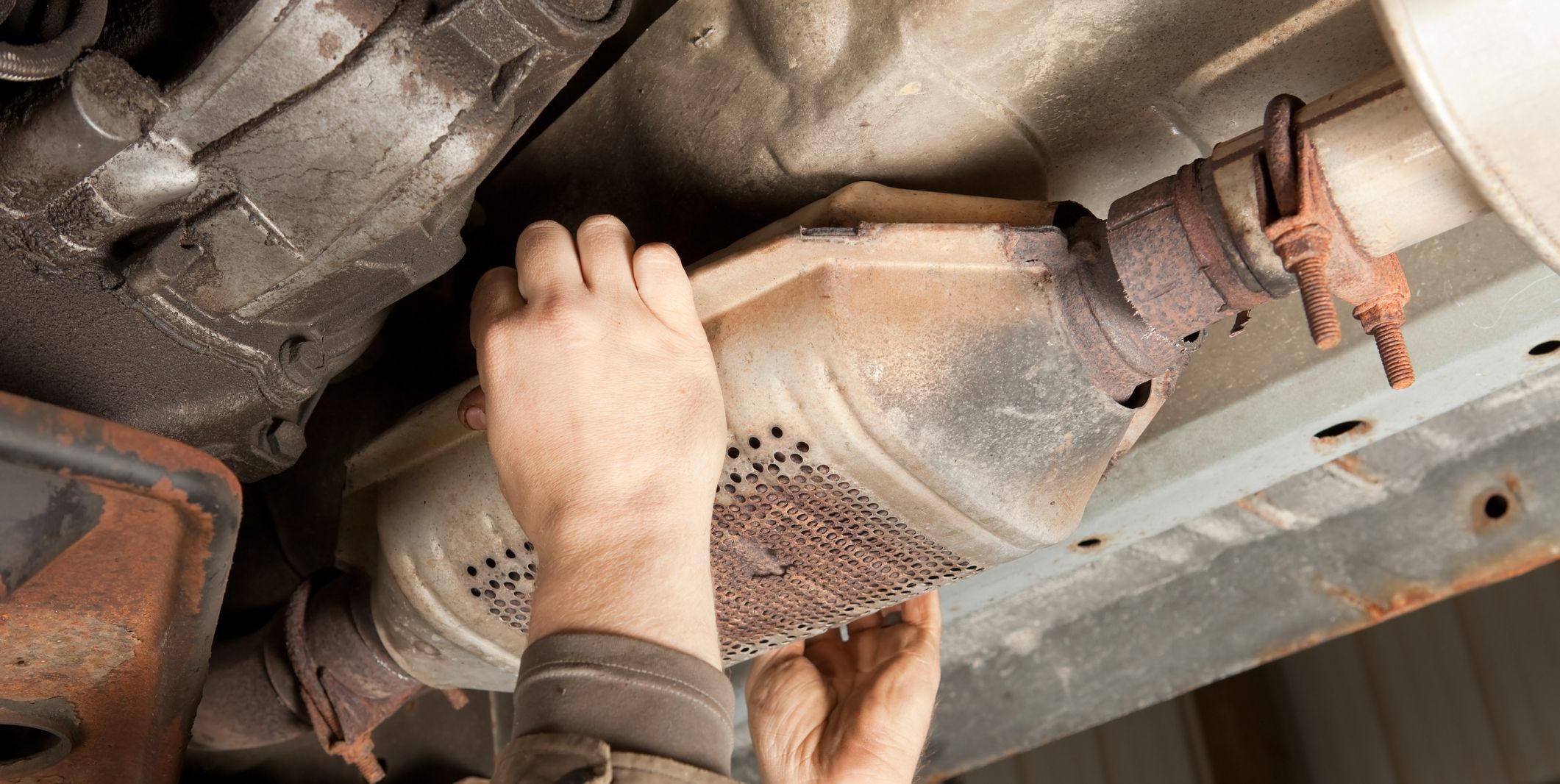
Catalytic converter theft is at an all-time high, according to law officials. Scrap metal traders place a high value on catalytic converters as a material. Platinum, palladium, rhodium, and other precious metals are used in catalytic converters.
Catalytic converters have been required in all automobiles since 1974. Thieves can increase profits by selling stolen catalytic converters to scrapyards and metal recycling plants. The more palladium, platinum, and rhodium they contain, the higher their value.
How To Prevent Catalytic Converter Theft?
- Park near building entrances and in well-lit areas whenever possible.
- Have a mechanic weld the catalytic converter to the car’s frame to make stealing more challenging.
- Place your car in the garage and close all of the garage doors.
- Install a theft-deterrent device.
- Install cameras and motion-sensitive lighting in your parking lot.
- Set your car’s alarm to ring when it detects vibration.
- Inscribe your vehicle identification number (VIN) on the catalytic converter.
Wrap Up
In conclusion, catalytic converters are now standard in many cars worldwide. Catalytic converters have improved city air quality by lowering hazardous pollutants. These systems minimize car emissions by turning toxic pollutants into less damaging gases.
Due to increased dangerous emissions, driving an automobile without a catalytic converter is unlawful in many countries. The widespread use of catalytic converters in cars has reduced the environmental effect of transportation, and their ongoing usage will help create a cleaner and healthier environment.

